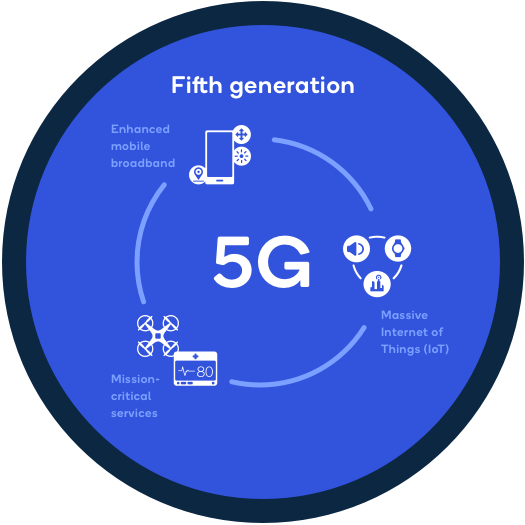Index Surge: Amplifying Your Insights
Stay updated with the latest trends and news across various industries.
5G: The Good, the Bad, and the Buffering
Discover the truth about 5G—its perks, pitfalls, and how it impacts your connectivity. Say goodbye to buffering today!
Understanding 5G: How It Transforms Connectivity and Communication
5G technology represents a significant leap forward in mobile connectivity, promising faster speeds and reduced latency compared to its predecessors. This new generation of wireless technology operates on higher frequency bands, allowing more data to be transmitted simultaneously. As a result, users can experience download speeds exceeding 1 Gbps and latency as low as 1 millisecond. This remarkable improvement opens doors for real-time data applications, enabling advancements in various fields such as autonomous vehicles, smart cities, and telemedicine.
The transformative power of 5G extends beyond individual consumer usage. It is set to revolutionize communication between devices in the Internet of Things (IoT) ecosystem, facilitating seamless interaction among billions of interconnected devices. Industries such as manufacturing, healthcare, and agriculture will benefit from the enhanced connectivity, leading to increased efficiency and productivity. Additionally, enhanced mobile broadband will empower users to enjoy uninterrupted streaming, immersive virtual reality experiences, and efficient online gaming, marking a new era in digital interaction.

The Downsides of 5G: Health Concerns and Environmental Impact
The rollout of 5G technology has been met with great enthusiasm, promising faster internet speeds and improved connectivity. However, alongside these benefits, there are growing health concerns that deserve attention. Numerous studies have raised questions about the potential effects of increased exposure to radiofrequency radiation emitted by 5G networks. Critics argue that the rise in frequency to the millimeter-wave spectrum could pose risks to human health, including potential links to cancer, reproductive issues, and neurological disorders. The debate continues as more research is needed to fully understand the long-term implications of living in a 5G-dense environment.
In addition to health concerns, the environmental impact of 5G technology is another critical factor that cannot be overlooked. The installation of 5G infrastructure, including a vast network of small cells, requires significant resources and energy. This expansion could lead to increased electronic waste and greater consumption of precious materials. Furthermore, the rapid deployment of antennas and other equipment could disrupt local ecosystems, threatening wildlife habitats and biodiversity. As we embrace the advancements of 5G, it is essential to weigh these downsides against the purported benefits, ensuring that responsible measures are taken to mitigate any negative effects on both health and the environment.
5G vs 4G: Is Faster Always Better?
The advent of 5G technology has sparked a debate on its advantages over 4G. While the biggest selling point of 5G is its significantly faster speeds, it is essential to consider whether speed alone determines an improved user experience. 5G promises downloads at up to 10 Gbps, compared to 4G’s maximum of around 100 Mbps. However, faster speeds may not always translate to better performance for every application, especially when latency and connectivity stability are also critical factors. For instance, users engaging in activities like online gaming may benefit more from reduced latency than sheer bandwidth.
Furthermore, the transition from 4G to 5G brings up concerns regarding coverage and device compatibility. As 5G networks are still expanding, many areas remain reliant on 4G, making faster speeds less accessible for users in those regions. Additionally, not all devices can support 5G, meaning that users may need to invest in new technology to experience the benefits. Therefore, while 5G presents exciting opportunities for enhanced mobile experiences, the question remains: Is faster always better?